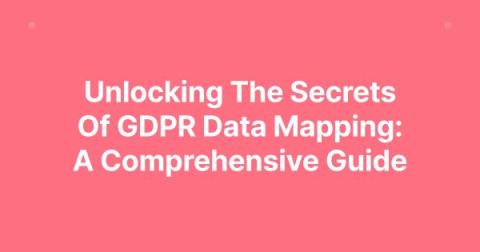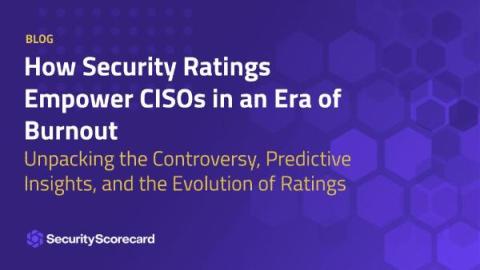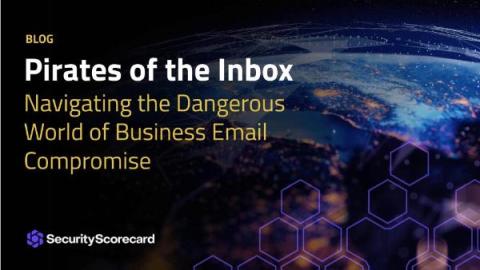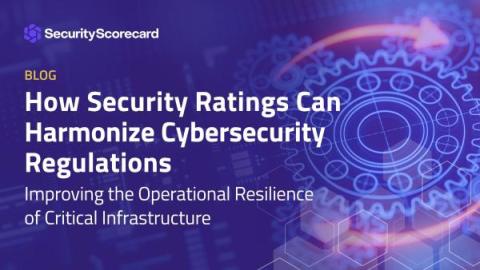Security | Threat Detection | Cyberattacks | DevSecOps | Compliance
Risk Management
Unlocking the Secrets of GDPR Data Mapping: A Comprehensive Guide
Imagine a world where you confidently navigate the complexities of General Data Protection Regulation (GDPR) compliance, streamline data processes, and safeguard sensitive information. Sounds enticing, right? The key lies in unlocking the secrets of GDPR data mapping. Let’s explore the ins and outs of this powerful process and learn how to harness its full potential for your organization.
How Security Ratings Empower CISOs in an Era of Burnout
When I bring up the topic of security ratings to my CISO colleagues, I typically get one of two reactions. The first half complains about misattribution of issues along with reporting fix times (although accuracy has improved). But the other half understand how to leverage this technology to their benefit to make their jobs easier and their organizations safer. Read below to get under the hood of how to leverage the evolving application of this technology to secure your supply chain.
Pirates of the Inbox: Navigating the Dangerous World of Business Email Compromise
Business Email Compromise (BEC) is one of the fastest-growing and financially-damaging cybercrimes. It has consistently led the way in cybercrime losses in recent years. According to the 2022 FBI Internet Crime Report, the FBI received 21,832 Business Email Compromise (BEC) complaints, with estimated losses totalling more than $2.7B. Data shows a 38% increase in cybercrime as a service targeting business email between 2019 and 2022.
Application Risk Assessments: Why They're Important and How to Perform Them
An application risk assessment is the process of evaluating and understanding the security risks associated with an application. This information is used to help organizations make better decisions about how to protect their applications from potential attacks. By examining factors such as the number of vulnerabilities and the time needed to patch them, they are able to estimate the possibility of an attack on their application.
CISO's Guide to Data-Driven Budget for Cyber Security Spend
How Security Ratings Can Harmonize Cybersecurity Regulations
In July of this year, the Office of the National Cyber Director (ONCD) stated in its release of an RFI on regulatory harmonization that: “When cybersecurity regulations of the same underlying technology are inconsistent or contradictory—or where they are duplicative but enforced differently by different regulators … consumers pay more, and our national security suffers.” This is an understatement. SecurityScorecard agrees and was happy to share our comments with ONCD today.
Cyber Trust and Transparency
In cybersecurity, the terms “trust” and “transparency” are often mentioned. And while they should no doubt be a priority, they can also be difficult to quantify. Good CISOs recognize that transparency in cybersecurity isn’t a one-time effort. It’s a continuous process that involves a near-constant state of evolution. But with the right tools and systems in place, it’s possible to not only measure trust and transparency but improve them as well.
Identifying Assets for IT Risk Analysis
What's new in Riscosity: October
Custom Descriptions Teams can now design custom descriptions to provide context as to why a finding was ignored, resolved or marked as false positive. Previously, teams were provided a set of out of the box options, for the common use cases. The new flow resembles a standard documentation process where canned and contextual responses are available to help scale internal communication.











